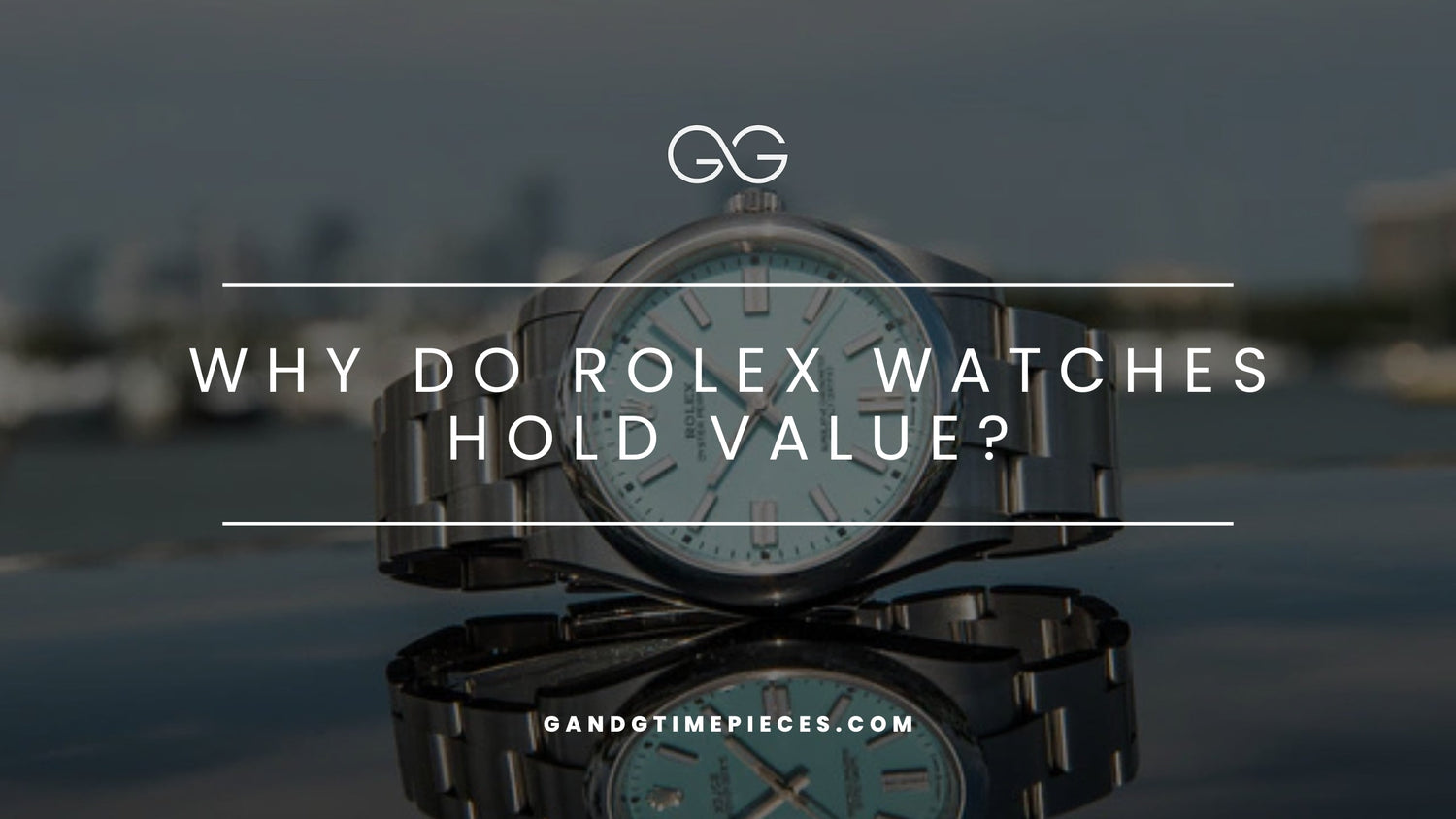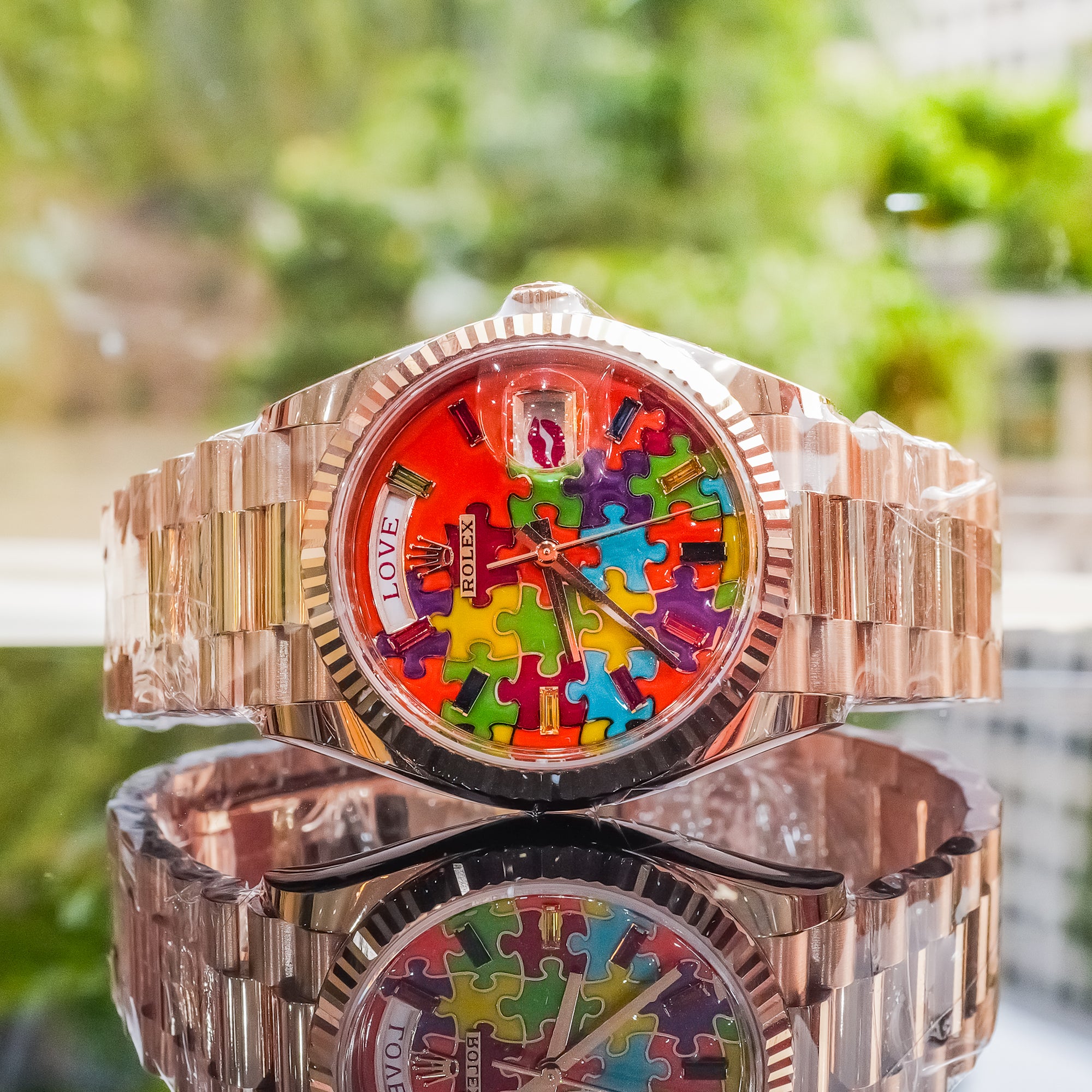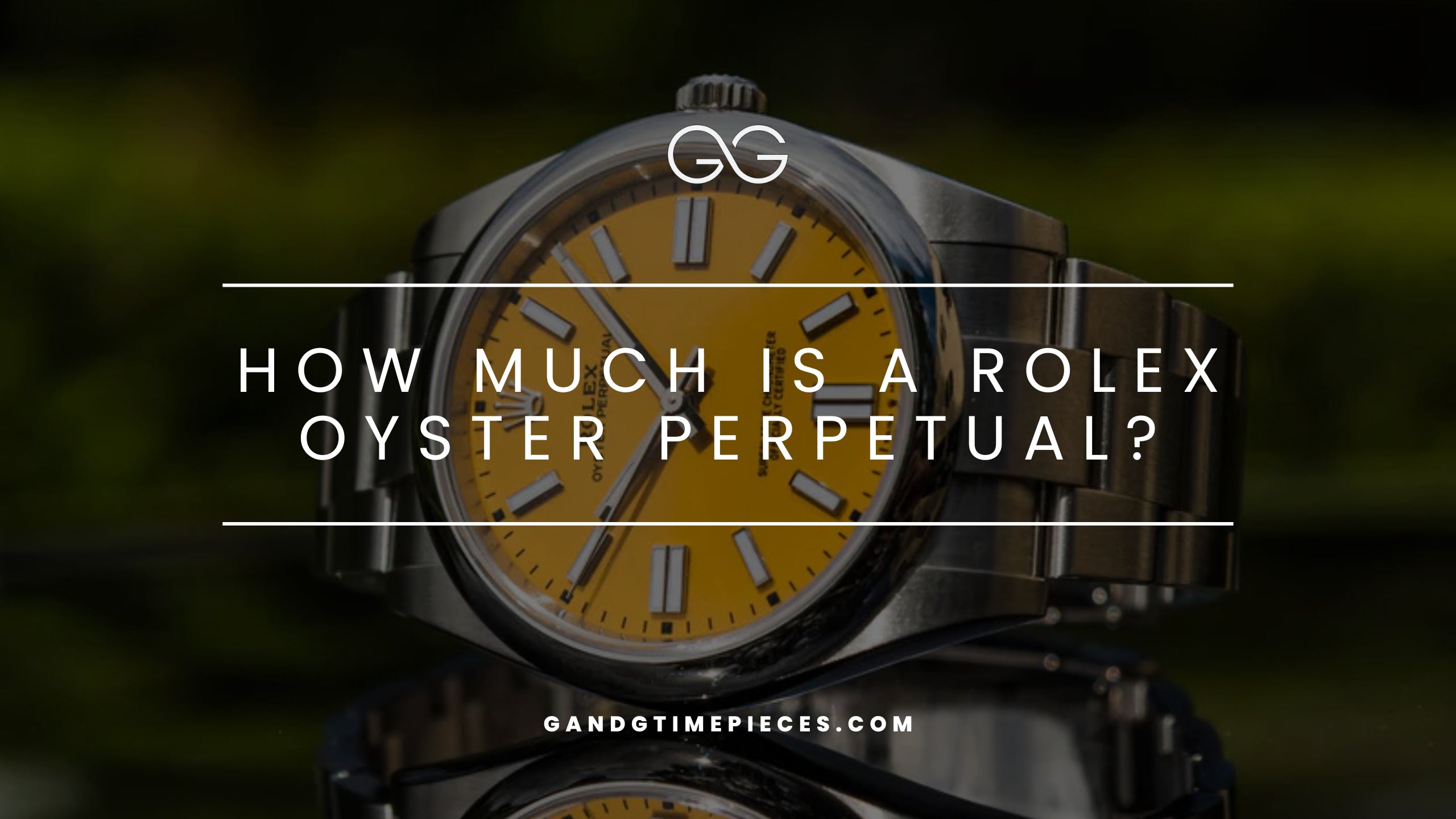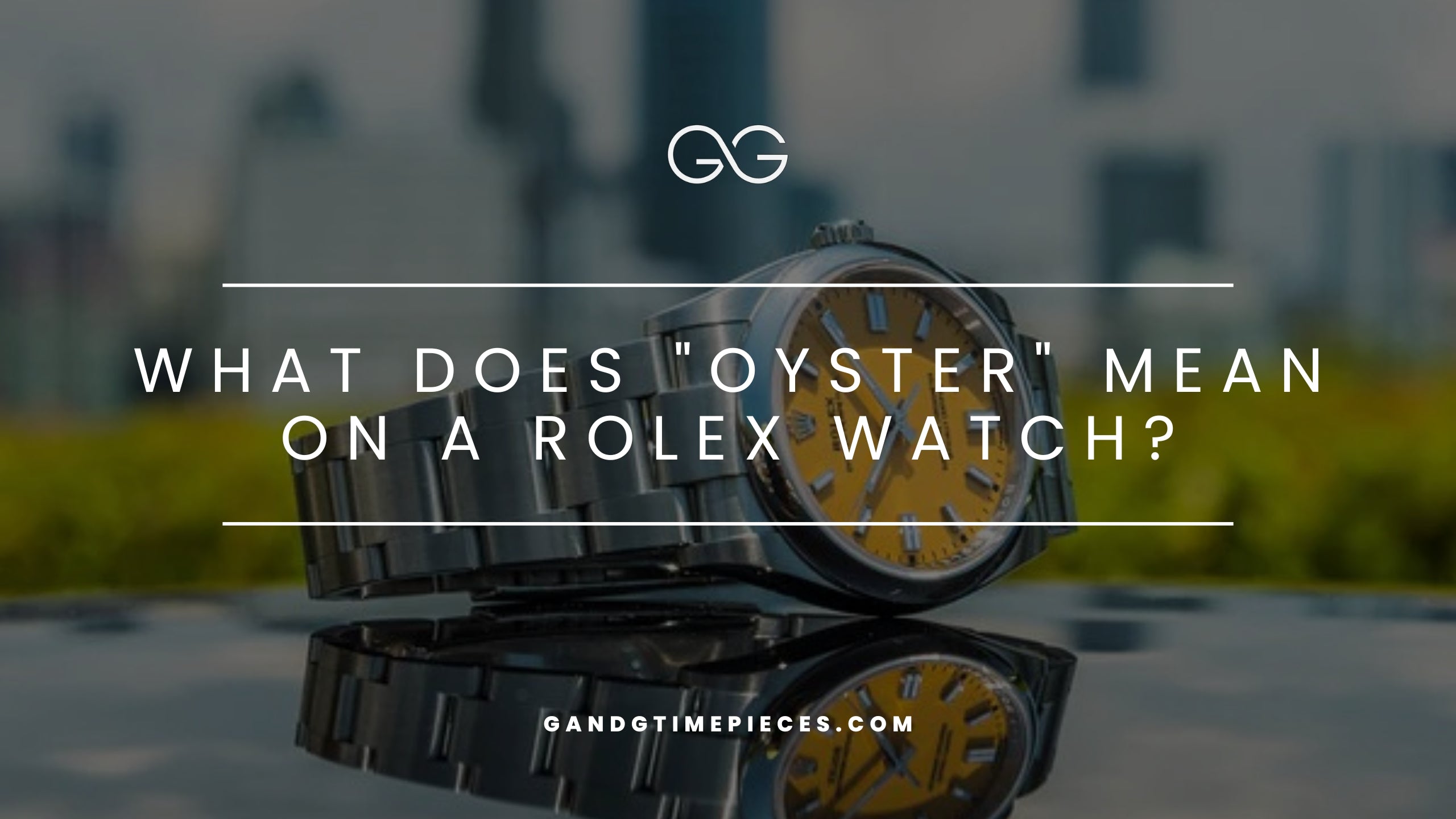Ever wonder why that Rolex on someone’s wrist might be worth more tomorrow than today? In a world where most luxury goods lose value the moment you walk out of the store, Rolex watches hold their worth like few other possessions can. It’s not just about the name—there’s real substance behind why these timepieces have become some of the most reliable investments in the luxury market.
Whether you’re eyeing your first luxury watch or wondering if that vintage rolex watches collection is worth building, understanding what drives Rolex value retention can help you make smarter decisions. Let’s break down exactly why Rolex watches maintain their appeal and market price across decades.
The Foundation of Value Retention

The reason Rolex watches hold value starts with something you can’t fake: time. With 119 years of watchmaking history since 1905, Rolex has built a legacy that new luxury watch brands simply can’t replicate overnight. This isn’t just about age—it’s about consistency in delivering exceptional craftsmanship and timeless design that transcends fashion trends.
Think about it: a Rolex Submariner from the 1960s still looks unmistakably modern today. That’s intentional. While other brands chase fleeting trends, Rolex perfected its aesthetic decades ago and stuck with it. This design philosophy means vintage Rolex watches don’t look dated—they look classic.
But heritage alone doesn’t explain market performance. Rolex produces roughly one million watches annually, which sounds like a lot until you consider global demand. This controlled production creates genuine scarcity that drives sustained interest. When authorized dealers consistently have waiting lists for popular models, it signals that supply hasn’t caught up with demand—a key factor in maintaining resale value.
The materials matter too. Where most luxury watch brands use standard 316L stainless steel, Rolex developed its own 904L grade (marketed as Oystersteel). This premium alloy offers superior corrosion resistance and maintains its finish longer. When paired with 18k gold smelted in-house and platinum components finished to aerospace standards, these watches are built to last generations—both mechanically and aesthetically.
Superior Manufacturing and Quality Standards
What sets Rolex apart from other luxury watch brands isn’t just what they make, but how they make it. While many prestigious names outsource components, Rolex maintains complete vertical integration. Every movement, case, dial, and bracelet comes from their own Swiss facilities. This level of control ensures consistency that directly translates to reliability and resale market confidence.
The technical innovations speak for themselves. Rolex developed the first waterproof wristwatch case (the Oyster) in 1926 and the first self-winding mechanism in 1931. Today’s calibers incorporate proprietary technologies like Parachrom hairsprings and Paraflex shock absorbers that minimize timekeeping errors from daily wear. These aren’t just marketing features—they’re measurable improvements that keep watches running accurately for decades.
Every component undergoes rigorous testing before assembly. We’re talking pressure testing for water resistance, shock resistance trials, magnetism tolerance checks, and long-duration accuracy verification. The standards exceed industry requirements because Rolex sets its own benchmarks. When a Rolex watch leaves the factory, it’s already proven it can handle whatever life throws at it.
This manufacturing excellence explains why pre-owned Rolex watches often perform mechanically like new pieces even after years of wear. That reliability translates directly to market confidence—buyers know they’re getting proven quality, which supports strong resale values across all Rolex models.
Brand Prestige and Cultural Impact
The cultural cachet of Rolex watches goes beyond typical luxury positioning. When Sir Edmund Hillary wore his Rolex to the summit of Everest, when James Bond chose Rolex for his missions, when Paul Newman’s Rolex Daytona became an icon—these weren’t paid endorsements. They were authentic choices by people whose lives demanded reliability.
This authentic heritage created something money can’t buy: genuine cultural significance. A rolex oyster perpetual isn’t just telling time—it’s communicating achievement, taste, and understanding of quality. This symbolic value transcends economic fluctuations because it’s rooted in decades of real-world performance and cultural association.
The brand’s marketing reinforces this positioning through strategic partnerships with elite sports and cultural events. Wimbledon, Formula 1, major sailing regattas—Rolex aligns with pursuits that emphasize precision, excellence, and tradition. These associations strengthen the brand’s luxury credentials and maintain its aspirational appeal across generations.
What’s particularly smart is how Rolex manages this prestige. They don’t chase celebrity endorsements or flood social media with promotional content. Instead, they maintain exclusivity while ensuring global recognition. This balance keeps Rolex watches desirable without making them feel common—a crucial factor in long-term value retention.
Market Dynamics and Scarcity

Here’s where things get interesting from an investment perspective. The limited supply of Rolex watches creates market dynamics that actually favor appreciation over time. With roughly one million watches produced annually against massive global demand, authorized dealers regularly have waiting lists for popular models like the Rolex Daytona and certain Rolex Submariner variants.
This scarcity isn’t artificial manipulation—it’s a byproduct of Rolex’s commitment to quality over quantity. They could certainly produce more watches, but that would require compromising either their manufacturing standards or flooding the market. Instead, they’ve chosen sustainable growth that maintains exclusivity.
The authorized dealer allocation system adds another layer of scarcity. Dealers receive limited quantities based on historical sales and customer relationships, meaning even visiting an authorized dealer doesn’t guarantee immediate availability. This system creates a secondary market where certain models trade at premiums above retail price.
Consider the “Batman” gmt master ii or the green “Hulk” Rolex Submariner before their discontinuation. These watches commanded waiting lists at retail but traded for 150-200% of the original retail price in the pre-owned market. When Rolex discontinued these colorways, their market value increased almost immediately as collectors recognized their future scarcity.
Not all Rolex watches experience this premium, but the most sought-after stainless steel sports models consistently perform above retail in secondary markets. This creates a unique situation where buyers can potentially recover their purchase price or even profit from their “daily wear” watch.
Models That Best Hold Value
Professional Sports Watches
When discussing which Rolex watches retain value best, the professional sports collection dominates. The Rolex Submariner, originally designed for diving in 1953, remains the gold standard for luxury sports watches. Whether you’re looking at vintage models from the 1960s or current production, Submariner watches consistently appreciate or hold value better than most luxury timepieces.
The Rolex Daytona tells an even more dramatic story. What started as a racing chronograph has become one of the most coveted timepieces in the world. Certain models trade for 200-300% above retail price, and the legendary Paul Newman’s watch (a vintage Daytona) sold for $17.8 million in 2017, setting an auction record that still stands.
The Rolex Datejust, while more of a dress watch, benefits from being the brand’s oldest continuous model line. Its versatility and iconic status help certain vintage models maintain strong values, particularly those with unique dial configurations or precious metals. However, stainless steel sports models typically outperform gold models in appreciation.
The Explorer and Sea-Dweller occupy more specialized niches but maintain excellent resale values due to their technical capabilities and lower production numbers. These rare timepieces appeal to serious collectors who appreciate their specific functions and understated designs.
Vintage and Discontinued Models
The vintage market is where Rolex watches really shine as investments. Vintage Rolex watches from the 1950s through 1970s, particularly in original condition, command premium prices that often surprise even seasoned collectors. Original dial, hands, and case condition matter enormously—collectors pay significant premiums for authenticity and completeness.
Discontinued color variants become instant collector favorites. When Rolex phases out specific colorways like the green Submariner or blue-black Batman GMT, their market values typically increase within months. Collectors recognize that these variations will never be produced again, creating long-term scarcity.
Documentation adds substantial value to vintage models. A pre-owned Rolex watch with original box, papers, and warranty cards can command 10-20% more than identical pieces without documentation. This premium reflects the importance of provenance in the luxury watch market, where authenticity verification is crucial.
Investment Considerations
Understanding which factors affect Rolex investment potential can help you make smarter purchasing decisions. Stainless steel sports models generally outperform precious metals in appreciation, partly because they appeal to broader audiences and have more practical daily-wear applications. While gold models hold value well, they don’t typically see the dramatic appreciation of steel sports watches.
Condition remains paramount. A pre-owned Rolex watch in excellent condition will always outperform a similar piece with visible wear or non-original components. The resale market rewards originality—modified watches or those with aftermarket parts typically sell at significant discounts to original examples.
Regular servicing by authorized service centers maintains both mechanical performance and market value. Documentation of proper maintenance history reassures buyers about the watch’s condition and authenticity. This service history becomes increasingly important as watches age and their mechanical integrity affects market acceptance.
The market price for any Rolex watch depends on multiple factors: model popularity, production era, condition, completeness, and current market trends. Understanding these variables helps identify watches with strong investment potential versus those better viewed as personal enjoyment pieces.
Economic Resilience and Long-term Performance

One of the most compelling aspects of Rolex watches as investments is their historical resilience during economic downturns. While other luxury goods typically lose value during recessions, expensive rolex watches often maintain or even increase their worth. This counter-cyclical performance makes them attractive hedge assets for diversified portfolios.
Data from recent decades shows certain models achieving compound annual growth rates of 5-15%, often outpacing inflation and sometimes matching traditional investment returns. During the 2008 financial crisis and COVID-19 pandemic disruptions, popular Rolex models either held steady or rebounded faster than broader luxury markets.
Global demand provides additional stability. Strong markets in Asia, Europe, and the Americas mean that regional economic downturns don’t necessarily crater worldwide demand. Emerging market wealth creation continues to generate new buyers for luxury timepieces, supporting long-term price stability.
The luxury watch market increasingly recognizes Rolex watches as legitimate alternative assets. Auction houses, investment funds, and wealth management firms now track luxury watch performance alongside traditional asset classes. This institutional recognition adds credibility to the investment thesis and provides more sophisticated market infrastructure.
However, market fluctuations do occur. Not all models appreciate equally, and timing matters for investment returns. Understanding market trends and maintaining realistic expectations helps distinguish between genuine investment opportunities and speculative bubbles.
Why Rolex Continues to Hold Value
At G&G Timepieces, we understand that choosing a Rolex means investing in both craftsmanship and financial security. Our expertise in the luxury watch market can help you identify pieces that align with your goals, whether you’re seeking your first Rolex or adding to an established collection. Ready to explore how a Rolex might fit into your timepiece journey? We’re here to guide you through the options and find the perfect match for your needs.
Frequently Asked Questions About Rolex Watches and Value Retention
Do Rolex watches generally hold their value?
Yes—Rolex watches generally hold value better than most luxury timepieces thanks to their heritage, brand's commitment to quality, and controlled production. High market demand for models like the Submariner and Daytona ensures strong resale prices, especially for highly sought stainless steel sports watches.
Are vintage Rolex watches a good investment?
Vintage watches—especially those in original condition—are considered a timeless investment in the watch industry. Their historical significance and rarity often lead to appreciation over time, making them a top choice for any serious watch collector.
Why are Rolex Oyster Perpetual models so popular?
The Rolex Oyster Perpetual combines the brand’s waterproof Rolex Oyster case with reliable automatic movements. Known for their durability and versatility, these models offer enduring value and are appealing to both new buyers and seasoned collectors.
Do expensive Rolex watches perform better as investments?
While expensive Rolex watches in precious metals like yellow gold hold strong perceived value, stainless steel sports models often outperform them in appreciation due to broader appeal and higher market demand.
How important is buying a new Rolex watch vs. pre-owned?
A new Rolex watch purchased at retail can be an excellent rolex investment if it’s a sought-after model with long waiting lists. However, pre-owned models—especially discontinued variants—can sometimes offer better short-term appreciation potential.
Do all Rolex watches appreciate at the same rate?
No—the same watch in different configurations may perform differently. Popular colorways, discontinued references, and models with unique provenance often command higher resale values in the highly sought segment of the market.
Is the Rolex market affected by global economic changes?
The Rolex market has proven resilient, with good investment potential even during downturns. Buyers seeking stable luxury assets often turn to Rolex during uncertaiTim Jonesn times, helping maintain prices.





